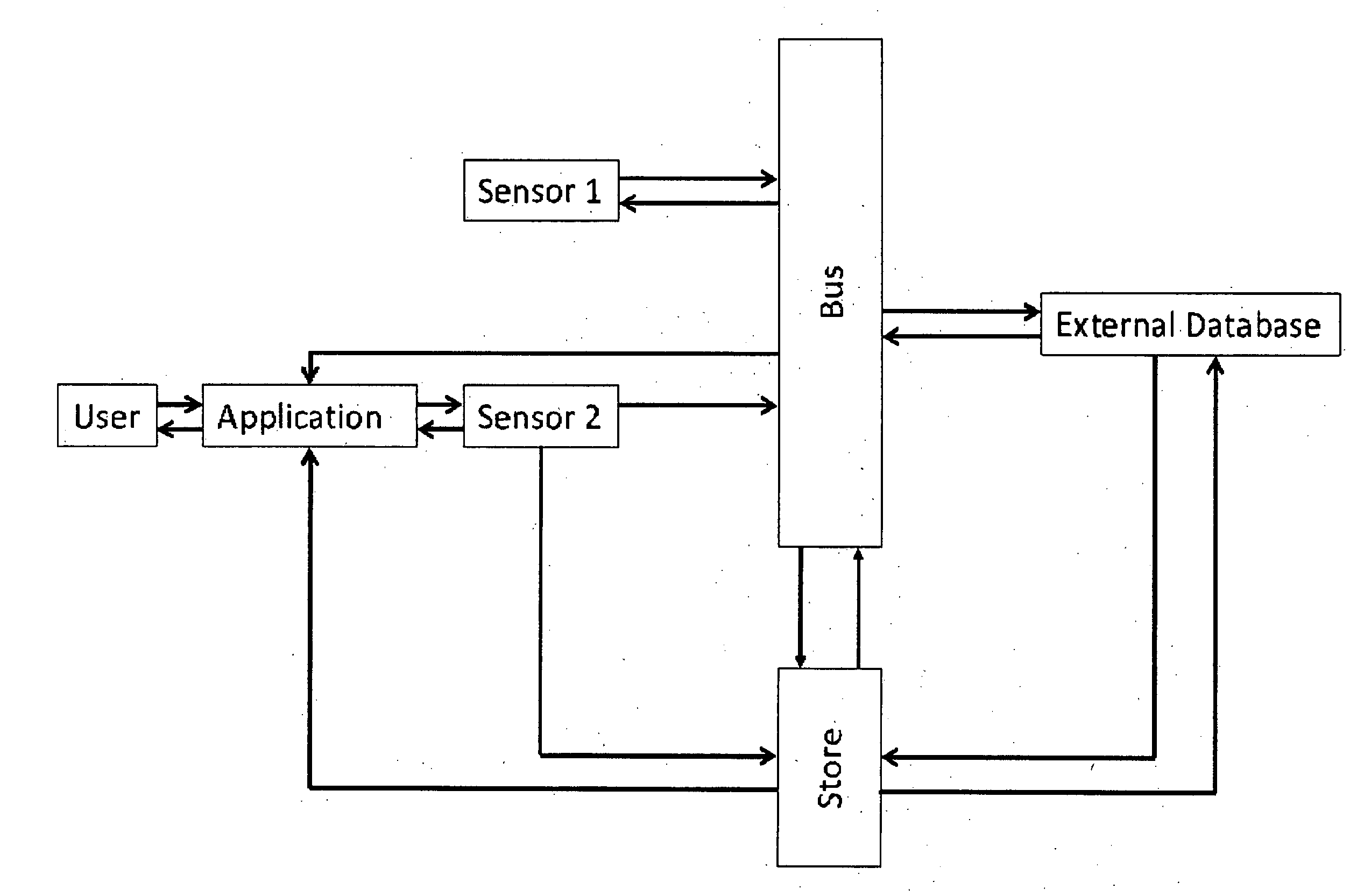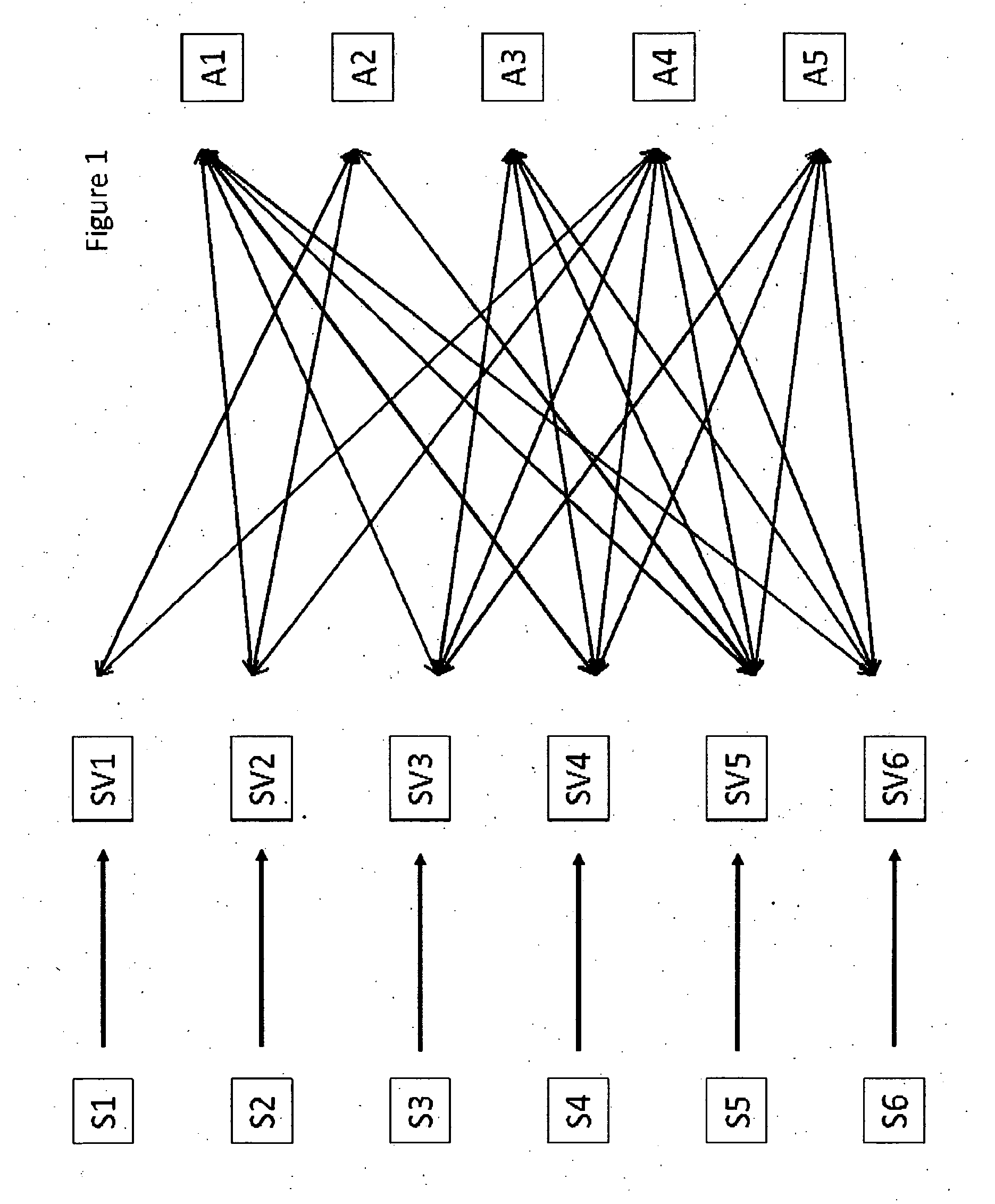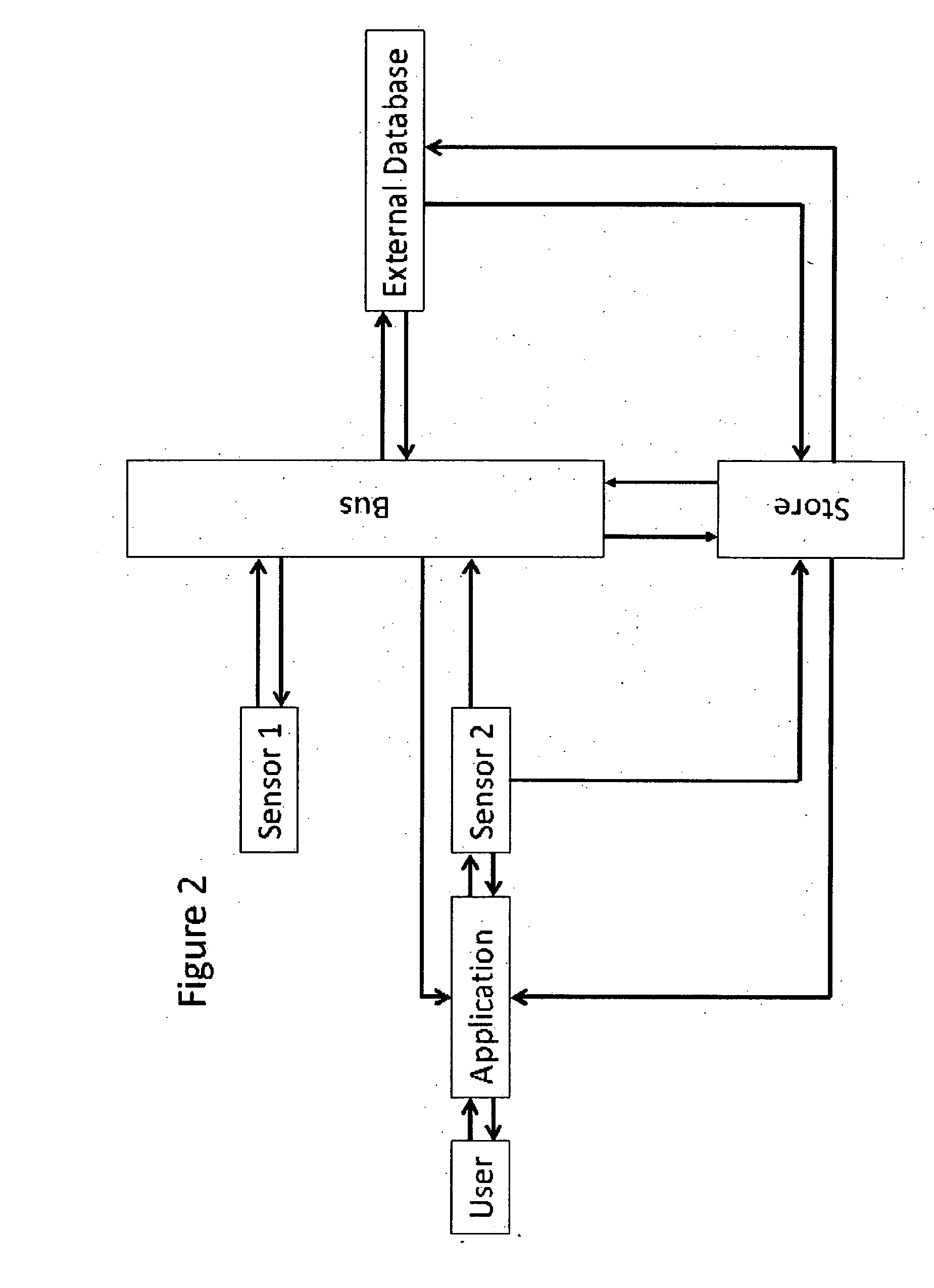Improvements relating to efficient transport
a technology for efficient transportation and efficient transportation, applied in the direction of traffic control systems, buying/selling/leasing transactions, instruments, etc., can solve the problems of inefficient social and business systems involving transactions, difficult and expensive to add qualitatively different sensors (e.g. different designs or fitted to different classes of vehicles) to an existing data system, and difficult and expensive to draw data from sensors that were not previously integrated, etc., to achieve the effect of reducing costs, increasing the amount of data available to applications, and low cos
- Summary
- Abstract
- Description
- Claims
- Application Information
AI Technical Summary
Benefits of technology
Problems solved by technology
Method used
Image
Examples
Embodiment Construction
[0074]It is convenient to describe the invention herein in relation to particularly preferred embodiments. However, the invention is applicable to a wide range of situations and it is to be appreciated that other constructions and arrangements are also considered as falling within the scope of the invention. Various modifications, alterations, variations and or additions to the construction and arrangements described herein are also considered as falling within the ambit and scope of the present invention.
[0075]As used herein, the term ‘sensor’ means a physical object providing data from the environment, or a computer model providing predictions or records of the value of data in the environment. Examples of sensors include, but are not limited to:[0076]a logical device on a mobile telephone;[0077]a GPS device;[0078]a video camera in a café providing a visual indication of the level of congestion and other visual information,[0079]a device in a bank providing a numerical indication ...
PUM
 Login to View More
Login to View More Abstract
Description
Claims
Application Information
 Login to View More
Login to View More - R&D
- Intellectual Property
- Life Sciences
- Materials
- Tech Scout
- Unparalleled Data Quality
- Higher Quality Content
- 60% Fewer Hallucinations
Browse by: Latest US Patents, China's latest patents, Technical Efficacy Thesaurus, Application Domain, Technology Topic, Popular Technical Reports.
© 2025 PatSnap. All rights reserved.Legal|Privacy policy|Modern Slavery Act Transparency Statement|Sitemap|About US| Contact US: help@patsnap.com



